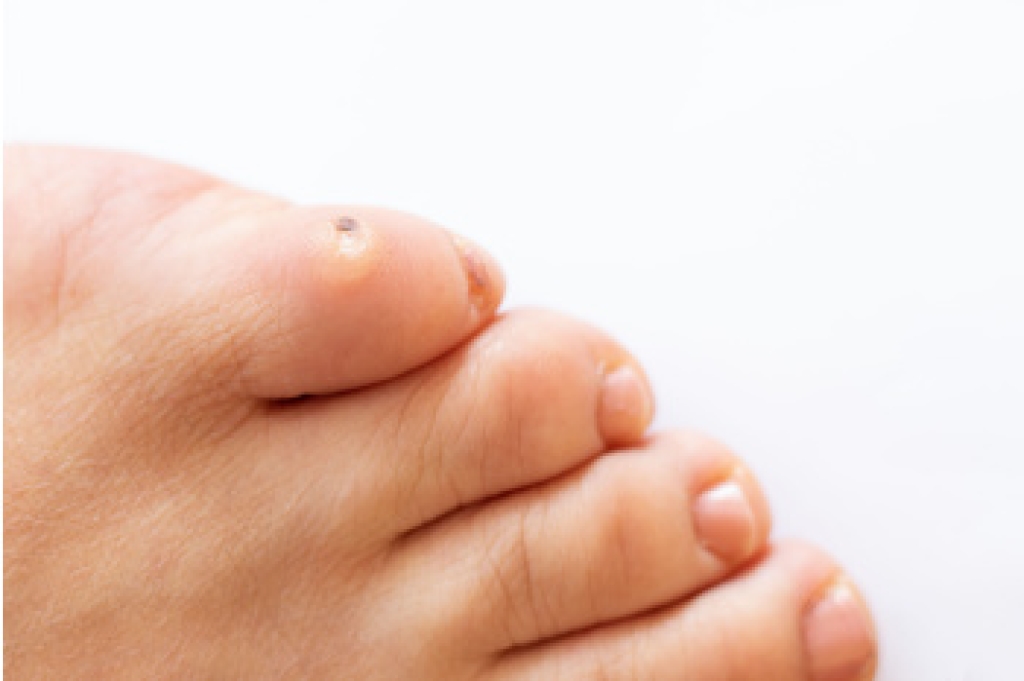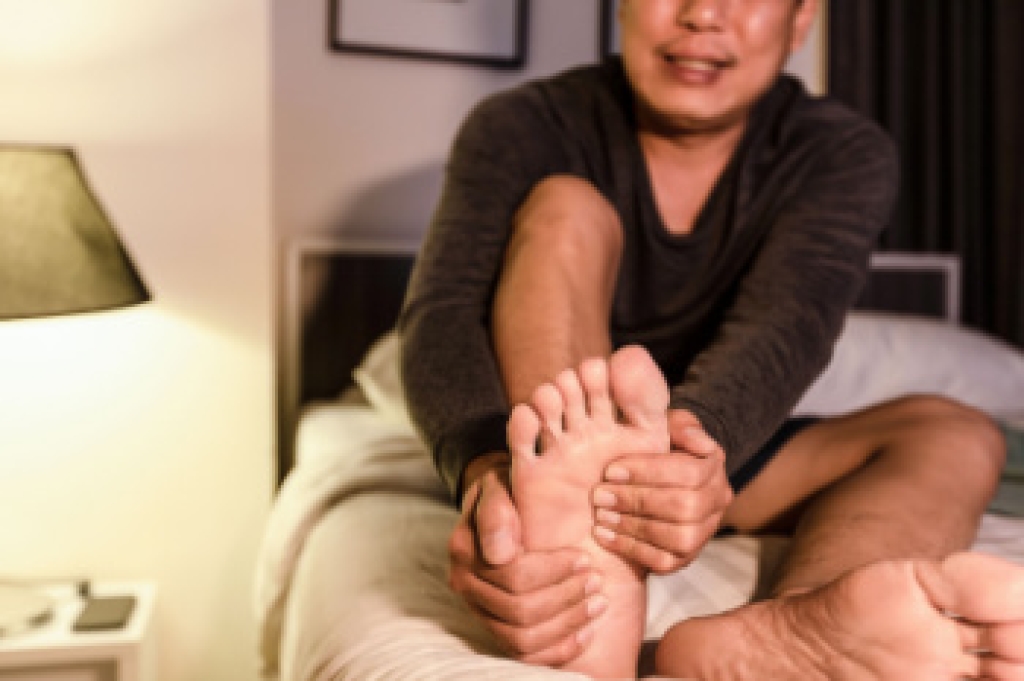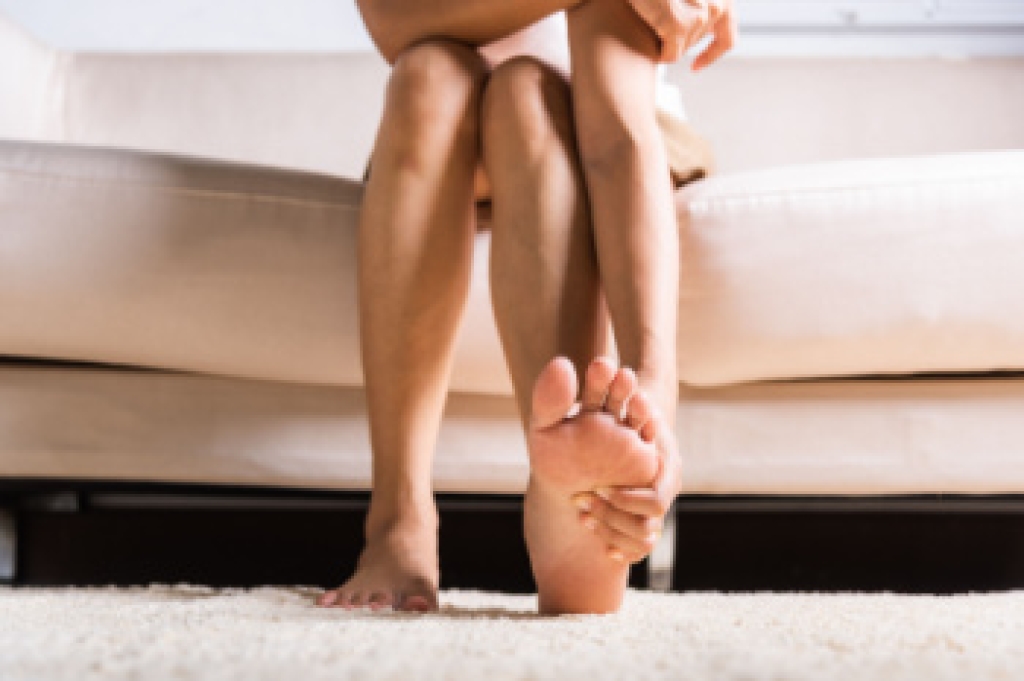Treatment Options for Corns on the Feet

Corns are painful, thickened areas of skin that commonly form on the small toes due to increased pressure from bony prominences. This pressure causes the skin to harden and thicken, resulting in discomfort, especially while walking. Non-operative treatment options for corns include padded corn sleeves, which distribute pressure more evenly, and toe spacers, which reduce friction between the toes. Corn donuts are another useful tool, off-loading pressure from the central painful area to the surrounding skin. Regularly trimming the callus can also help, though it is best to be done by a chiropodist, as the corn often recurs if the underlying issue is not addressed. In some cases, an X-ray may be necessary to identify the bony prominence causing the corn. Surgery is rarely needed, but can be considered if conservative treatments fail. Surgical options focus on removing the bony prominence and possibly straightening the affected toe joint. If you have painful corns, it is suggested that you schedule an appointment with a chiropodist who can determine what the best course of treatment is for you.
Corns are small bumps or dry, hardened skin that can arise on the feet, usually in response to friction. Corns can be asymptomatic, or they can be uncomfortable or painful. If you have corns that are bothering you, please consult with one of the chiropodists from The Footcare Centre. Our chiropodists can help you maintain the health of your lower limbs and your mobility.
There are three types of corns:
- Hard corns
- Often occur on the tops of toes
- Feature a hard core surrounded by dry, irritated skin
- Can be painful
- Soft corns
- Often occur in between the toes
- Soft due to constant exposure to sweat
- Can be painful
- Seed corns
- Tiny
- Often occur on the soles of the feet
- Usually asymptomatic
Corns can be prevented by wearing shoes that fit properly. They are typically benign and don’t require medical treatment. However, if your corns are causing you pain or discomfort, don’t hesitate to reach out to a chiropodist near you for treatment options. If you have any questions, please feel free to contact our office located in . We offer the newest diagnostic and treatment technologies for all your foot care needs.
Damage to Nerves in the Feet

Nerve damage in the feet, especially in the ball of the foot, is a painful issue that can disrupt daily life. This main cause is irritation of nerves between the toes, leading to their enlargement and the formation of benign neuromas. Morton’s neuroma, which typically occurs between the third and fourth toes, is an example, more commonly affecting women. Early symptoms of this type of nerve damage include a mild ache or tingling surrounding the toes, which can progress to a persistent burning sensation that radiates to the tips of the toes. These symptoms are often worsened by wearing tight or non-supportive shoes, combined with thinning fat pads in the foot and poor foot posture. Diagnosis usually involves a thorough examination and history review by a chiropodist, with imaging tests sometimes used to exclude other conditions. Treatment generally focuses on changing footwear, using orthotic devices, and possible injections of corticosteroids to relieve pain. In some cases, cryotherapy or alcohol injections might be effective. If you are experiencing symptoms of nerve damage in the feet, it is suggested that you schedule an appointment with a chiropodist for an exam and diagnosis, followed by a personalized treatment plan.
Neuropathy can cause permanent nerve damage if left untreated. If you are experiencing the symptoms of peripheral neuropathy, please consult with one of the chiropodists from The Footcare Centre. Our chiropodists will assess your condition and provide you with quality foot and ankle treatment.
What Is Peripheral Neuropathy?
Peripheral neuropathy is a condition that damages the nerves of the peripheral nervous system, which provide sensation to the limbs. The feet are often affected. Peripheral neuropathy can have many different causes, but it is most commonly associated with diabetes.
Symptoms
Common symptoms of peripheral neuropathy include:
- Pain
- Numbness or tingling sensation
- Burning sensations
- Weakness
- Loss of balance
Diagnosis
Peripheral neuropathy is diagnosed based on medical history and physical examination. Various tests performed during physical examinations can help determine the type of peripheral neuropathy you may have and what is causing it.
Treatment
Treatment for peripheral neuropathy will depend on what is causing it. For example, if your peripheral neuropathy is caused by diabetes, then managing your blood sugar, exercising regularly to strengthen the legs and feet, and taking pain medications may be recommended as treatments.
If you have any questions, please feel free to contact our office located in . We offer the newest diagnostic and treatment technologies for all your foot care needs.
Common Causes of Foot Pain

Foot pain can affect anyone, anywhere on the foot, from the heel to the toes, and even the arch and sole. Factors that contribute to foot pain include age, prolonged standing, excess weight, and congenital foot deformities. Injuries, wearing ill-fitting shoes, and intense physical activity are other culprits. In addition to injuries, conditions such as arthritis, gout, flat feet, and plantar fasciitis are among the more common causes of foot pain. One way to help manage foot pain involves wearing properly fitting shoes with sufficient support and cushioning. This also may include custom orthotic shoe inserts to correct any biomechanical issues that are contributing to the particular condition. Warming up before exercise, regular stretching, maintaining a healthy weight, and strengthening foot muscles through exercises are methods to avoid foot pain. However, persistent or worsening foot pain warrants professional attention from a chiropodist. This foot specialist can conduct a thorough exam and devise an appropriate treatment plan. It is suggested that you make an appointment with a chiropodist to address foot pain concerns.
Foot pain is a common problem treated by chiropodists. If you have foot pain, please consult with one of the chiropodists from The Footcare Centre. Our chiropodists can help you maintain the health of your lower limbs and your mobility.
When you are experiencing foot pain, it’s important to note the type of pain and its location, as this can help determine a diagnosis.
Pain in the top of the foot may be caused by:
- Stress fractures
- Sinus tarsi syndrome
- Extensor tendonitis
- Tibialis anterior tendonitis
- Gout
- Athlete’s foot
- Ganglion cysts
Pain in the bottom of the foot may be caused by:
- Plantar fasciitis
- Foot cramps
- Tarsal tunnel syndrome
- Plantar fibromatosis
- Posterior tibial tendonitis
- Stress fractures
- Flat feet
Pain on the side of the foot may be caused by:
- Ankle sprain
- Cuboid syndrome
- Peroneal tendonitis
- Stress fractures
- Bunions
- Corns or calluses
- Posterior tibial tendonitis
Heel pain may be caused by:
- Plantar fasciitis
- Achilles tendonitis
- Bone spurs
- Heel fractures
- Retrocalcaneal bursitis
- Sever’s disease
Pain in the toes may be caused by:
- Gout
- Hammertoe
- Turf toe
- Bunions
- Ingrown toenails
- Blisters
- Arthritis
These and many more conditions can be treated by a chiropodist. If you have any questions, please feel free to contact our office located in . We offer the newest diagnostic and treatment technologies for all your foot care needs.


